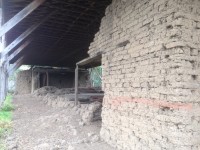This column comes direct from Egypt. Last week, my son Andrew and I traveled from San Francisco to Paris and on to Cairo.
The day of departure began perfectly. Andrew had a championship game with his St. Francis CYO league and squeezed out a two-point lead by the final buzzer. With a smile on our faces we raced to the airport to visit friends in Egypt and carry on the responsibilities of our sister-city relationship in Aswan. Given the political and economic unrest in Egypt, Andrew and I embarked through the back roads of Egypt.
Our first night was spent on Gezira Island, in a neighborhood known as Zamalek. A short walk over a bridge lays Tahrir Square, the focal point of the 2011 revolution. The citizens of Egypt are awaiting the word from Field Marshall Abdel Fattah Saeed Hussein Khalil el-Sisi that he will run for President. As we shop the Khan-el Khalini, a maze of alleys and streets where humans have visited for over a thousand years, we find a variety of el-Sisi paraphernalia, chocolates, t-shirts and pajamas adorned with his face and infamous sunglasses.
Our primary goal in Cairo was to visit an old friend to Sonoma, Ambassador Abderahaman Salaheldin. Ambassador Salaheldin promoted the relationship back in 2008. He later moved from America to represent Egypt in Turkey, and due to recent turmoil between the two countries, is back in Egypt teaching cadets the necessities of being a success in the Egyptian Consular Corps. We met close to our hotel in a restaurant specializing in Egyptian food; the kind of food one would expect if one had returned home after a long hiatus.
This year, Andrew and I did not visit the pyramids at Giza. We spent but one day in Cairo and headed south to Aswan. Our friend, Yasser Taha, welcomed us at the airport and delivered us at our hotel situated on Elephantine Island in the Nile. In Aswan, we had a number of goals, all of which included a mixture of business and pleasure. We met with Magdy Rabie, the Chair of the Aswan Committee, to discuss tourism.
Aswan is rather removed from much of the trouble escalating in Egypt. It is truly a destination in and of itself, with breathtaking Pharonic monuments in proximity to the City. Visiting Cairo is like drinking five Red Bulls within 60; visiting Aswan is like drinking a soothing cup of tea while soaking in the silence of the prolific sand dunes on the west side of the Nile. However, there is one thing missing in the routine Egyptian vacation, the opportunity for visitors to participate in the practice of archaeology.
In Sonoma, a few years ago, I introduced our community to public archaeology. In general, the public gets its information from books and museums, but practicing archaeology is closed to the public. Public archaeology provides a unique perspective for participants. Under the right supervision, there is no reason to exclude the public from participating in the process.
I introduced this perspective to Mr. Rabie, who also has a government position with the Tourism Ministry, and he enjoyed the idea. For some travelers, the notion of heading to Egypt and actually participating in an excavation would be quite appealing.
Andrew and I met with Toto, a Nubian man who lives in Gharb (west) Aswan, and arranged to explore the western desert by camel. While one can see the excavated portions of the Tombs of the Nobles, one of many Pharonic highlights in Aswan, there are hundreds, if not thousands, of unexcavated sites extending in-land from the Nile. For us, finding clues left for thousands of years as to the location of these sites was exhilarating. Ancient rock-lined roads are visible throughout the desert. They all lead to something exciting.
Exploring rock outcrops with an archaeological eye allowed us to find ancient graffiti and pot shards. Andrew noticed some bones and upon closer examination it became clear that they were human. It was clear that we were not hiking in the backwoods of Sonoma. Next week I continue the tour, as Andrew and I turn stones in Dabah and southern Sinai.


Be First to Comment